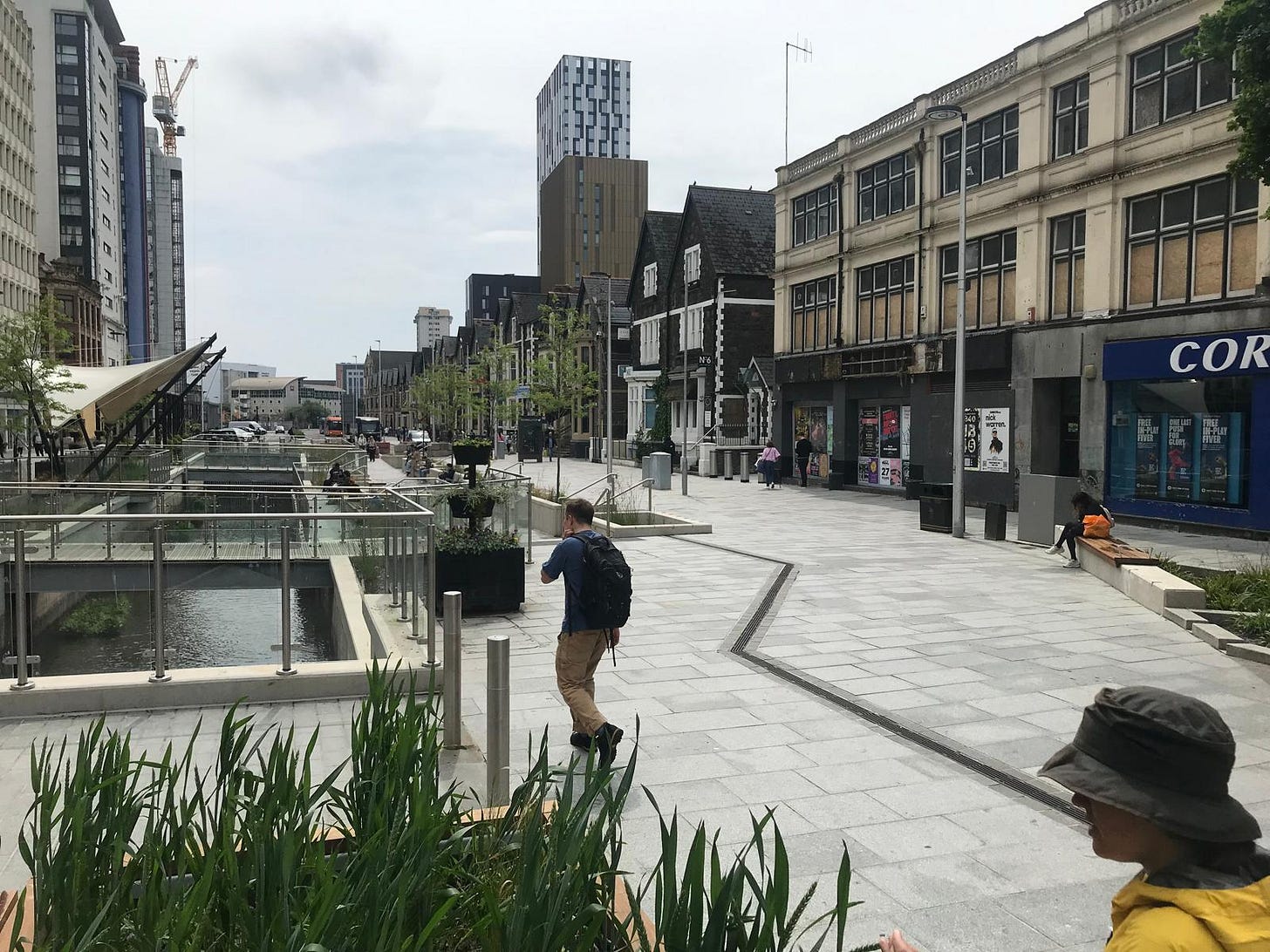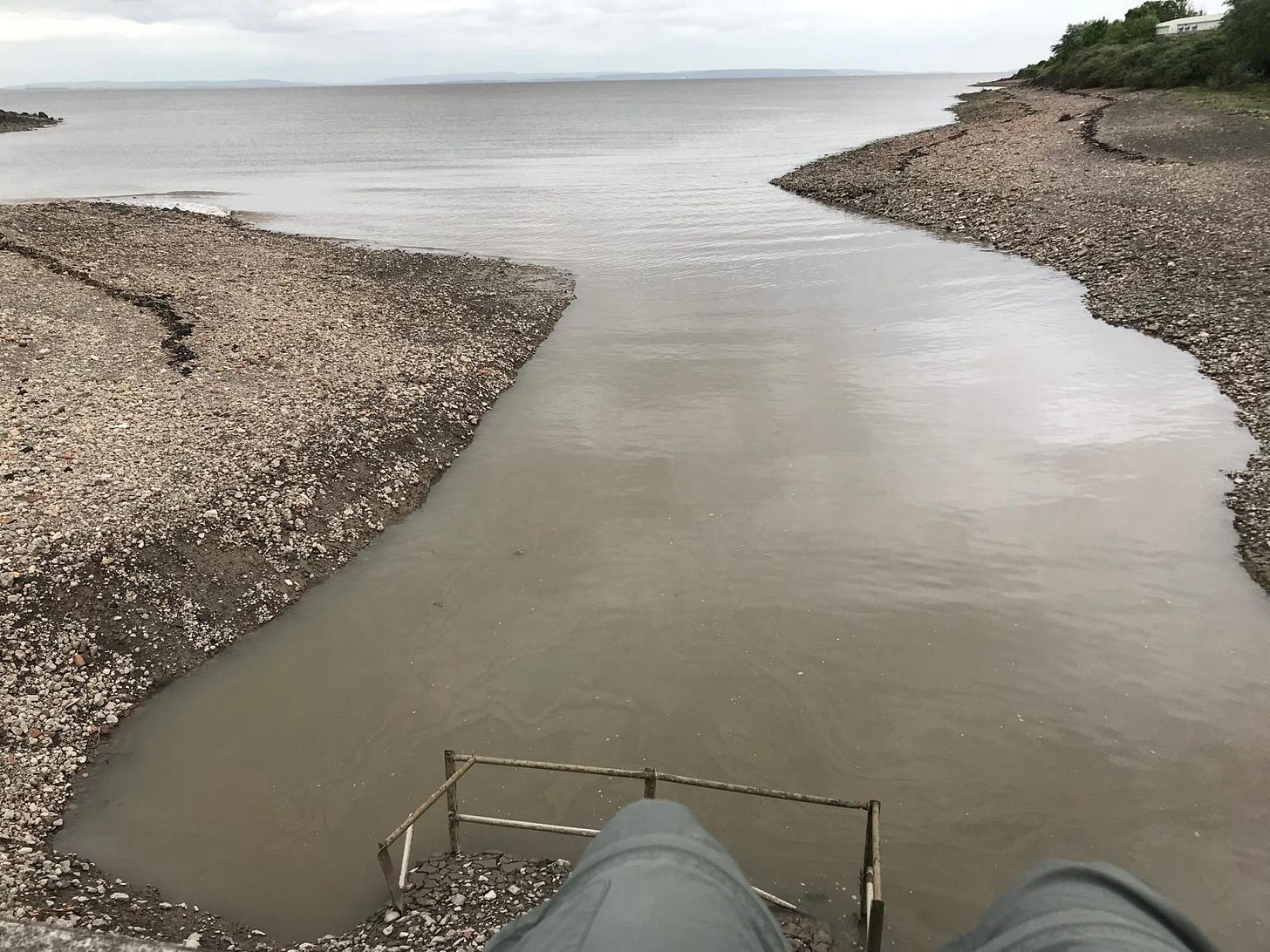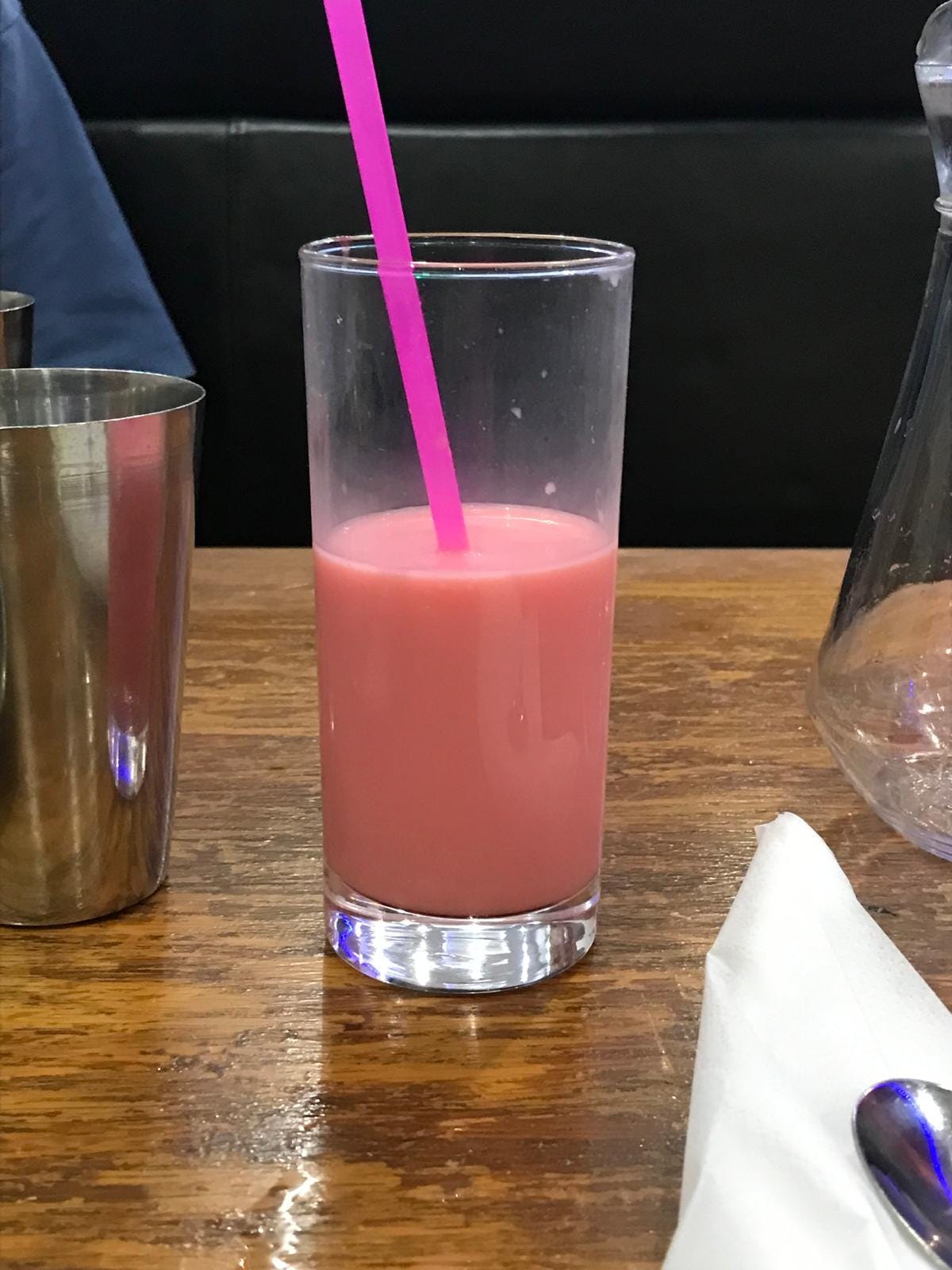Apologies for the delay this week! My excuse is the same travel which made this article possible. Normal service will resume by next week…
This week, I’ve been on a road trip with Bea. We drove up to Cambridge from our west Cornwall abode and have progressively worked our way west. After staying in Bristol—a city I’ve yet to wrap my head around—we went to Cardiff to stay with my brother Luke. He’s a drummer. One of the bands he’s in, Tendertwin, have just released a new single by the way, which is beautiful.
Cardiff is a very interesting city indeed. It is difficult to explain what makes it tick succinctly, because it has so many disparate and conflicting parts. The most important thing to understand, though, is its peculiar development pattern. Most important cities in the UK have long histories as cities, or something approaching them. London is a Roman settlement; same with York. Norwich, Bristol, Edinburgh, etc. were well established in the medieval period. Birmingham and Manchester famously have later histories, receiving city status in the 1850s and 1880s respectively.
Cardiff, however, is a much more extreme newbie. Cardiff only received city status in 1906. Before this point, it was a county town. The city centre has the feeling of a village which has exploded outwards around the central point of a parish church (St John the Baptist). The medieval parish church massively pre-dates all of the buildings around it which are 19th century at the earliest. The contrast is a kind of chronological whiplash.
In scale, Cardiff’s city centre has more in common with a modest provincial town than a capital. The buildings are scarcely more than a handful of storeys tall and the central streets are fairly narrow, pedestrianised affairs. Like Cardiff, the centre of Dublin lacks tall buildings too. But Dublin’s Georgian architecture has a ruthless width and repetition which makes it seem huge by comparison.
Perhaps most jarringly of all, Cardiff’s city centre just stops. It is surrounded by water on three sides, and a big arterial A-road on the north side. (Google thinks it’s even smaller, and cuts it off with another A-road to the south). Weirdly I can embed Spotify tracks in this article but it won’t let me embed a map, so you’ll have to follow this link to see what I mean about the constrained centre of Wales’ capital.
The eccentricity goes deeper. Something about the small scale of Cardiff’s centre seems to have lent itself to architectural one-offs, good and bad. There are some truly superb works of Victorian Gothic. The former Prince of Wales theatre (now a Spoons) is remarkable: the building’s main facade is a symmetrical composition which manages not to look laboured (a common problem with Vicky G), and is full of interest and whimsy and feeling. It has a lot of respect for its genuine medieval predecessors but not too much respect. It’s not all good. Some of the buildings, which sit in similarly sized plots to the good ones, are extremely weak examples of brutalism. These are thoughtless buildings which have no interest in materials, artlessly copying the rugged geometry of the great brutalist edifices.
Outside of Cardiff’s heterogeneous centre, there are vast areas of two- and three-storey terraced housing. The housing is ca. late 19th and early 20th century, built by speculators. This is common throughout the British Isles, and reflects the setting many of us grow up in.
Less common is the heavy industry that still lurks around Cardiff, particularly to the south, by the sea. A sea view is normally desirable, but in this context it’s paired with a fierce smell of hydrogen sulfide and petrochemicals. On my brother’s recommendation for a spot of dark tourism, we headed straight to Splott Beach. This ‘beach’ is a remarkable place. It consists of two banks at an acute angle, rather like an armpit. It is Cardiff’s orifice. It eschews golden sand and palm trees for bricks and coal. Really: the beach consists of spent coals from steel or brick works, and dud bricks which have been chucked into a grey abyss. Parodying Bali, the beach is fringed by greenery, but of a decidedly northern variety. A concrete platform and galvanised steel balustrade projects out into the water. It’s comically bleak. But there was something about the scene which prompted reflection about ignored places and human activity
If Splott Beach is one extreme of Cardiff, then its other extreme is at the northern end, Cathays Park. This small quarter features a series of decidedly ‘colonial’ classical buildings in white stone, built around a rectangular garden. This part of town is clean, grandiose, ordered, and self conscious. It is everything Splott is not. My brother told me that this section of the city has been used as a stand-in for Washington DC, which makes complete sense. The purpose-builtness of it all is fundamentally un-English. This is satisfying, given that Wales is not England.
My overall impression of Cardiff is that it’s certainly an interesting place, but it’s not immediately loveable. Because Cardiff is not London, however, people can live for less and pursue creative things. That is a blessing. My brother is part of Shift, a sprawling arts project which makes use of an otherwise-vacant office building for artists’ studios and avant garde music. What’s also great, along with its Victorian gems, is Cardiff’s international gastronomy.
Luke, Bea and I went to Ponnuswamy Restaurant, in the north-east of the city (Plasnewydd). Ponnuswamy is a cash-only joint serving specifically south-Indian food. The food was unbelievably good. The chef-cum-waiter took our orders in reassuringly turmeric-stained garb. I ordered a pink ‘rose milk’ which turned out to be the comedy menu item (Luke described it as Jigglypuff in a blender); Luke and Bea ordered good chai. The food is set at prices from about ten years ago, with occasional price hikes of ca. 50p written in biro over the entries. All the items we tried were deeply flavoured and aggressively moreish.
For me, highlights like the odd Victorian masterpiece or this restaurant redeem the whole, which would otherwise be too bleak or too incoherent to enjoy. It only takes a few sites to make a place worth visiting.









